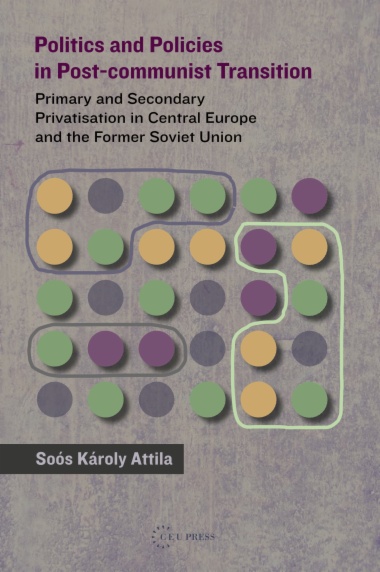Discusses the policies, practices and outcomes of privatization in six transition economies: the Czech Republic, Hungary, Poland, Russia, Slovenia and Ukraine, paying particular attention to cross-country differences and to interrelations between the processes of privatisation and the political transition from communism to a new system.The analysis is restricted to the privatisation in those fields where its methods have been strongly different from privatisations in advanced market economies and where differences of privatisation principles and techniques among our six countries were also rather various. This is basically the privatisation of middle-sized and large enterprises, not including banks, non-bank financial companies, natural monopolies and agricultural entities.
- Cover
- Title page
- Copyright page
- Table of Contents
- List of Graphs
- List of Tables
- Acknowledgments
- Foreword and overview
- 1 Introduction
- 1.1 The background
- 1.2 (Another) delimitation of the subject
- 1.3 Managerial power and the bogey of spontaneous privatisation
- 2 Privatisation: why and how?
- 2.1 The need for privatisation and the irrelevance of longterm considerations
- 2.2 The limited applicability of the classical solution
- 2.3 Selling at equitable prices
- 2.4 Search for other equitable—preferential—solutions onthe basis of political and ideological considerations
- 3 An overview of the processes of primary privatisation in the six countries
- 3.1 Primary privatisation leaving limited space for secondary privatisation—Hungary
- 3.2 Primary privatisation—the Czech Republic
- 3.3 Primary privatisation—Russia
- 3.4 Primary privatisation—Ukraine
- 3.5 Primary privatisation—Poland
- 3.6 Primary privatisation—Slovenia
- 4 Secondary privatisation in (essentially only) five countries
- 4.1 Secondary privatisation—the Czech Republic
- 4.2 Secondary privatisation—Poland
- 4.3 Secondary privatisation—Slovenia
- 4.4 Secondary privatisation—Russia
- 4.5 Secondary privatisation—Ukraine
- 5 Primary and secondary privatisation—countries of slowand rapid concentration of the ownership structure
- 5.1 Differences in corporate governance systems
- 5.2 Once again on the differences of patterns of primary privatisation (and on why insider ownership isproblematic)
- 5.3 A finding that remains unexplained
- 6 The speed of secondary privatisation and the characteristics of political transition
- 6.1 Transition indicators and the quality of governance
- 6.2 Interpenetration between public administration and company management in the countries of slow secondary privatisation
- 6.2.1 Public administration as a minority co-ownercausing uncertainty
- 6.2.2 Non-transparent imposition of tax-type paymentson companies
- 6.2.3 Interpenetration between public administration and company management and the soft budget constraint
- 6.3 Soft political transition and interpenetration between public administration and company management
- 6.3.1 The Slovenian political transition (and some shortremarks on Slovakia)
- 6.3.2 The Russian and Ukrainian political transitions
- 6.3.3 Hard political transition and the end of interpenetration between public administration andcompany management
- 7 Conclusions
- 7.1 Privatisation and the character of political transition
- 7.2 Notes on the economic and social consequences ofdifferent political and economic reforms
- 7.2.1 Visegrád countries and Slovenia: some notes onsocial development
- 7.2.2 Visegrád countries and Slovenia: some notes on economic development
- References
- back cover

